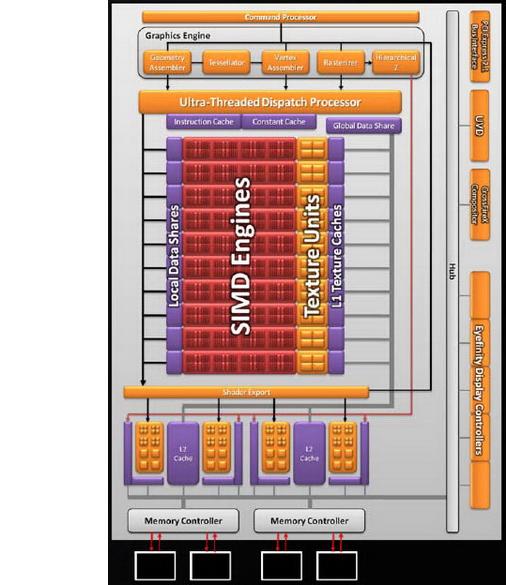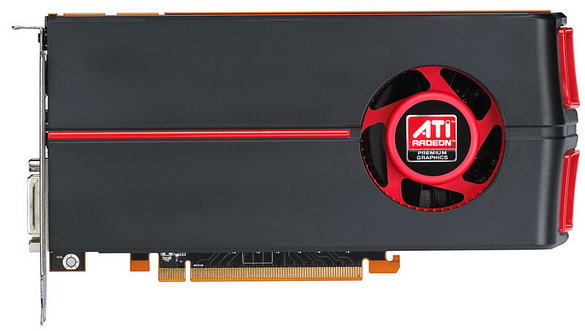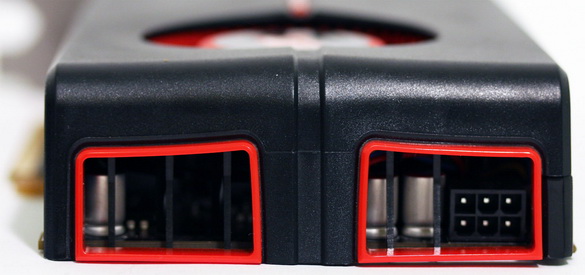Radeon HD 5770

All the same architectural balancing principles that were laid down in the Radeon HD 5870 carry over to the new graphics cards, so we can expect performance on par with or better than the ATI Radeon HD 4870 GPU, given its 800 stream processors at 750 MHz (total 1, 2 TFLOPS) and 900 MHz GDDR5 memory.

The Radeon HD 5770 is a halving of the Radeon HD 5870. The result is something reminiscent of the Radeon HD 4870 graphics card. An ATI Juniper GPU consists of 1.04 billion transistors. Here we also see 800 stream processors, 40 texture units and a depth/stencil calculation speed of 64 pixels per clock. However, the memory interface has halved compared to Cypress, meaning it is now only 128 bits. In any case, ATI equips the video card with GDDR5 memory, and the memory bandwidth is up to 76.8 GB / s.

As with the large Cypress graphics card, the 5770 requires additional power to be connected to the back of the card to operate, though this time it will require one six-pin power plug rather than two. In addition, AMD has recessed the socket a bit so that plugs and cables don't get in the way.

Of course, there is also a "weak spot". The Radeon HD 4870 graphics processor uses a 256-bit memory bus, which gives a bandwidth of 115.2 GB / s. We'll see in tests that this difference in specs results in a slightly different overall performance picture. The 128-bit memory bus is the Achilles' heel of the HD 5770.
| Name | Radeon HD 5770 |
| Core | Juniper |
| Process technology (µm) | 40 |
| Transistors (million) | 1040 |
| Core frequency | 750 |
| Memory frequency (DDR) | 1200(4800QDR) |
| Bus and memory type | GDDR5 128-bit |
| Bandwidth (Gb/s) | 75.6 |
| Unified shader blocks | 800 |
| Frequency of unified shader units | 670 |
| TMU per conveyor | 40 |
| ROP | 16 |
| Shader Model | 5.0 |
| Fill Rate (Mtex/s) | 24000 |
| DirectX | 11.0 |
| Memory | 512/1024 |
| Interface | PCIe 2.0 |



